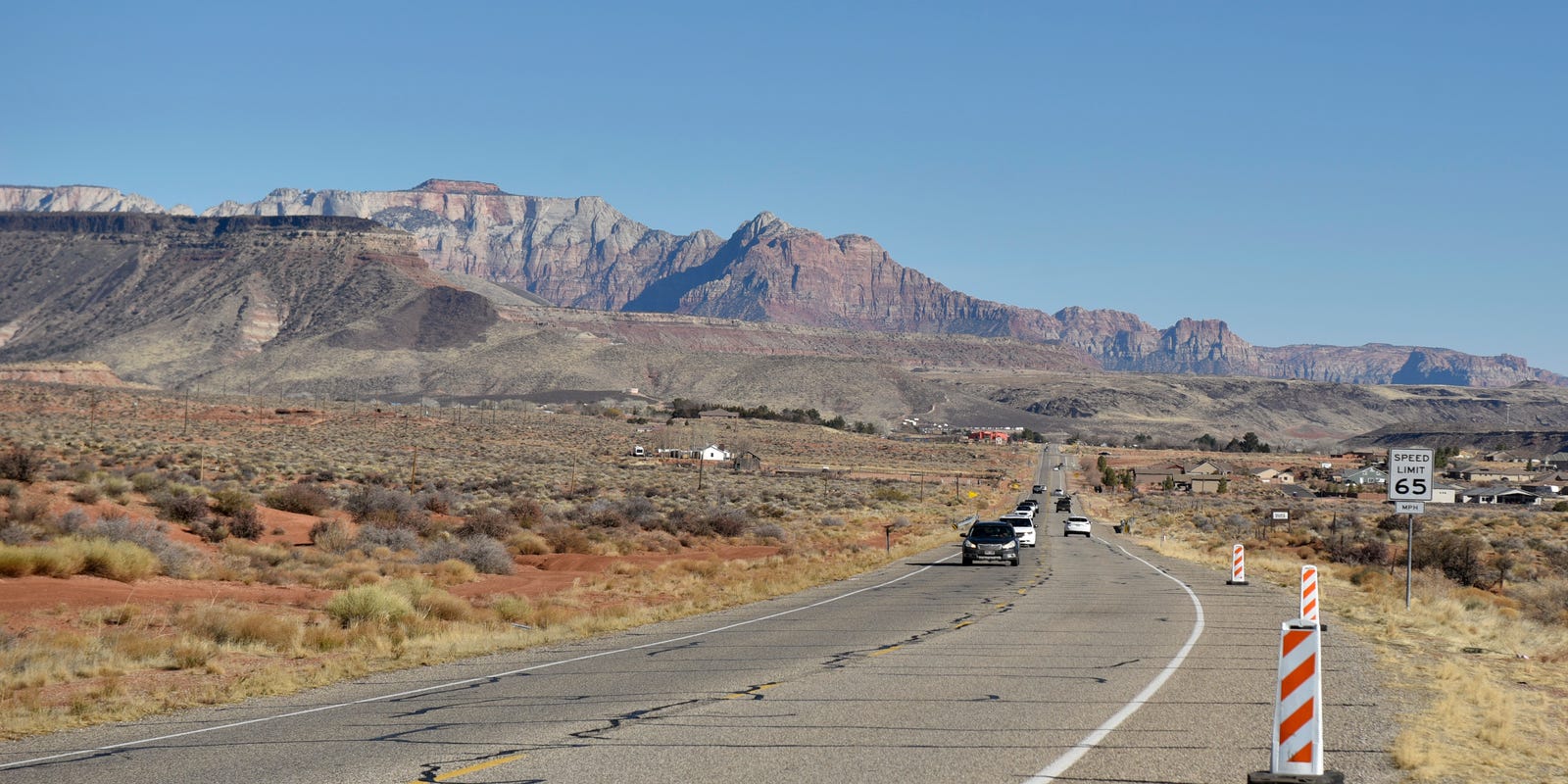Utah – The next time you’re driving down 300 West in Salt Lake City and you nearly cause a three-car pileup while swerving to avoid a pothole, take heart in the good news. Utah (tied with Georgia) received the highest grade in the country for its infrastructure.
The bad news is it’s a C+.
The report cards came from the White House on Monday as part of its effort to sell President Joe Biden’s American Jobs Plan, a $2.3 trillion proposal to update the country’s infrastructure. In concept, this is what Republicans and Democrats have been clamoring for the past two decades. Fixing streets, building bridges, improving waterways — these are nonpartisan practicalities that members of Congress would be eager to hand their constituents.
In practice, it’s not that simple. Senate Minority Leader Mitch McConnell vowed he would oppose Biden’s plan “every step of the way.” Chief among Republicans’ concerns is the price tag, which Biden plans to offset with tax hikes.
“It’s called infrastructure,” McConnell told reporters, “but inside the Trojan horse, it’s going to be more borrowed money and massive tax increases on all the productive parts of our economy.”
And then there’s the question of how one defines “infrastructure.” Biden is taking a more imaginative approach in his plan, which includes payments for typical assets like roads and bridges, but which also pays for bolstering health care, providing jobs for caregivers and building affordable housing.
Is it the right plan for America? I spent the past few days talking to economists about Biden’s proposal, and I took away three key principles: 1) Let federalism work, 2) Markets can’t do it alone, and 3) Updating infrastructure must mean updating policy.
First, Biden wants to spend big. But as Richard Geddes, a professor and infrastructure expert at Cornell University, points out, most of America’s infrastructure is owned by state and local governments. Should Washington be directing how a city improves its roads? How will the funds be disbursed from the federal government to the states? Without clear guardrails, Washington will do what it tends to do: run over local control.
Second, we should acknowledge the federal government has a role to play. The interstate highway system wasn’t built by competing private companies; it needed a certain continuity that the government could provide. Biden is right to assume the government has an interest in building and updating physical civil assets, although it seems that letting the markets decide how to allocate child care providers or green energy jobs would be more efficient.
Third, the U.S. is not the same country it was a century ago. We don’t need a brand-new electric grid, Geddes said. What we do need is to update the policies that maintain what infrastructure we already have. Cities seek bids for a new bridge, take the cheapest contract, and then what? We have massive deferred maintenance, Geddes says, and we need to have discussions about permitting and procurement reform, maintenance contracts, and other policy aspects. Without updating policy, Biden’s plan could lead to the same place we are today — crumbling dams and buildings in disrepair.
What does Biden’s plan mean for Utah? The White House claims the Beehive State suffers from slow public transit, that 2,064 miles of highways are in poor condition, and that Utah’s drinking water systems will need an additional $4.4 billion in the next 20 years.
That’s fine. The state is growing faster than a colony of rabbits, and it will need serious investments to keep up with the pace of in-migration.
But what about child care? The White House claims 77% of Utahns live in a child care desert, suggesting the need to invest in schools and “early learning facilities.” That may or may not account for the fact that Utah has the youngest population in the nation, and it assumes parents prefer to put children in institutional day care rather than make other arrangements. And what of housing? It’s true Utah is facing a housing shortage, but it’s also No. 1 in the country for new-home construction. It would seem difficult to substantially increase supply without also decreasing demand.
The point is there are many forces at work. Markets ought to do their job in the areas they can be the most effective, and cities and the state ought to have ownership of updating their own infrastructure. It’s clear our structures need help, but Utahns should think critically about whether Washington’s approach is right for the state.






